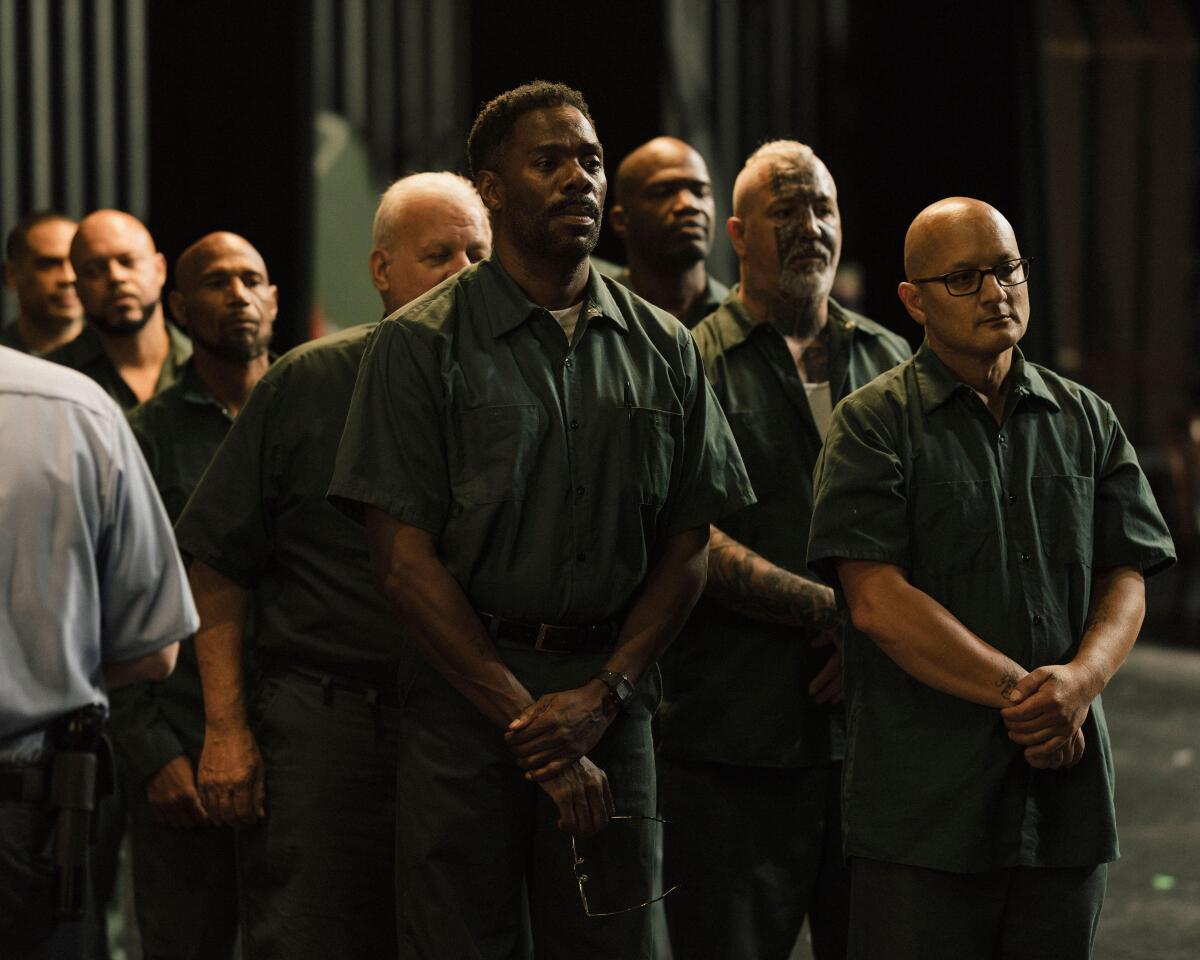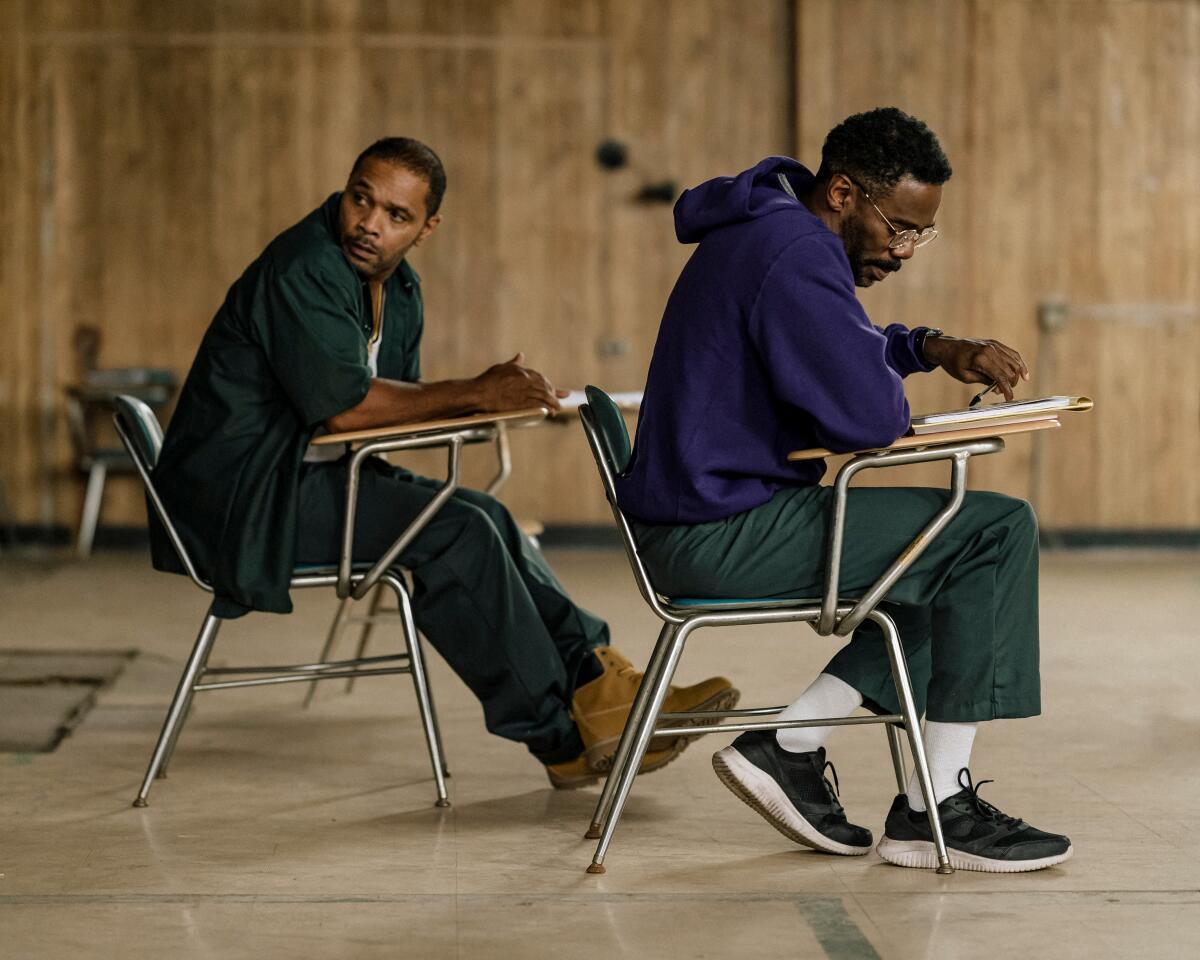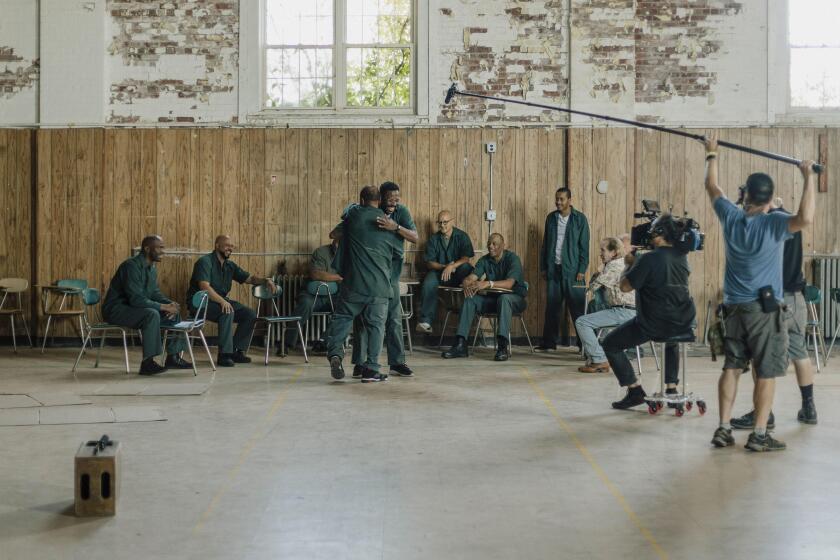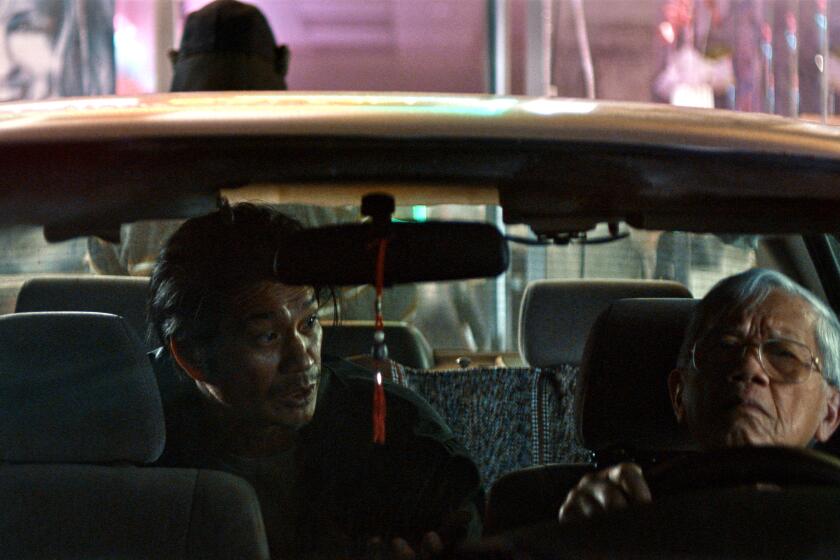Review: In ‘Sing Sing,’ the stage is bound by prison walls, but imagination and dignity roam free

- Share via
A film like “Sing Sing” is a rare, precious achievement — a cinematic work of unique empathy and hand-turned humanity, hewed from the heart, with rigorous attention paid to the creative process.
How this quietly captivating film was made is almost the more important story, but it is part and parcel with the text on screen. “Sing Sing” is the result of years of research and volunteer work on behalf of writer-director Greg Kwedar and his co-writer, Clint Bentley, with Rehabilitation Through the Arts, a theater program for men incarcerated at Sing Sing Correctional Facility. At first, Kwedar and Bentley tried to mount a narrative film project about RTA involving professional actors, but never managed to capture the magic they experienced in the room itself, watching prisoners. So they decided to bring the room itself to the screen, casting a group of RTA alumni alongside stars Colman Domingo and Paul Raci.
In “Sing Sing,” the supporting cast are all playing themselves (or something close to it), and giving damn good performances too. Domingo steps into the role of John “Divine G” Whitfield, a man incarcerated at Sing Sing who has become a playwright and actor through RTA. Raci plays RTA teacher Brent Buell with his signature irascible warmth from “Sound of Metal,” while one of Domingo’s longtime collaborators, Sean San Jose, gives a terrific performance as Mike Mike, Divine G’s close friend. However, the true star-is-born moment in “Sing Sing” belongs to Clarence “Divine Eye” Maclin, playing himself, a man hardened by his past and his present, who finds grace and tenderness in the theater.
A24’s acclaimed movie follows the production of a theater group that’s composed of incarcerated members. But the emotional breakthroughs they make are universal.
The plot follows the production of RTA’s first original play, a sprawling hodgepodge of a time-travel comedy that moves from ancient Egypt to gladiatorial arenas to the Old West, with a visit from Freddy Krueger too. (It’s based on the real Buell’s play “Breakin’ the Mummy’s Code,” detailed in a 2005 Esquire article by John H. Richardson.) But the film is about so much more than just these men putting on a show. It’s about the hope and heartbreak within these walls and the personal growth and triumph that these men experience together onstage. It’s a stark reminder that life in prison is still life.
Kwedar demonstrates a remarkable patience with his filmmaking, in both form and storytelling. Cinematographer Pat Scola shoots on 16 mm film stock, requiring the kind of care and thoughtfulness that this story also requires. The look is rich and saturated in a warm palette of earthy golds and greens that reflect both the natural and institutional environments.
“Sing Sing” establishes a visual motif of slow zooms to situate the characters in their spaces and draw our attention to their interactions, but also to constantly remind us of where they are, even when they do find emotional escape. In the theater room, while the men share with each other or participate in improv games, the camera is loose and at eye level, inviting the audience to become participants.

Kwedar and Bentley’s screenplay is deft and subtle, personal backstories emerging organically in conversation. They also make the powerful choice to skirt melodrama and avoid the kind of violence one might expect from a typical “prison movie.” There is loss, grief and disappointment, but this is not a sensationalized portrait of prison ritual. It’s a humble assertion that incarcerated life continues in all its tragedies and triumphs: Loved ones are lost and challenges seem insurmountable, but hard work pays off and there are still happy surprises to be had.
In this deeply empathetic depiction, “Sing Sing” is a powerful argument for the existence of humanity within a space designed to dehumanize. RTA is an oasis in an institution where everyday life is replete with large and small humiliations and nagging reminders that their time and lives are not their own, with room searches, verbal abuse and parole hearings shaping their reality.
Domingo, recently of “Rustin,” “The Color Purple” and “Zola,” is the kind of actor who can do anything, but he does this kind of quietly dignified, heartbreakingly hopeful character just about better than anyone. He is the beating, bleeding heart of “Sing Sing,” but he allows his troupe of players to shine even brighter and take center stage for their big moments. San Jose delivers a monologue that is one of the year’s most devastating. But Maclin steals the movie performing his own personal journey as an initially hard man who slowly allows himself to crack open and let the light — and love — in.
If it feels as if Kwedar doesn’t exactly know how to end the film — a few too many denouements clutter the conclusion — it’s a forgivable infraction. One can almost feel him searching for the right moment to let us go, the film itself an all-too-brief moment of grace that you’ll be reluctant to leave.
Katie Walsh is a Tribune News Service film critic.
'Sing Sing'
Rating: R, for language throughout
Running time: 1 hour, 45 minutes
Playing: In limited release Friday, July 12
More to Read
Only good movies
Get the Indie Focus newsletter, Mark Olsen's weekly guide to the world of cinema.
You may occasionally receive promotional content from the Los Angeles Times.











